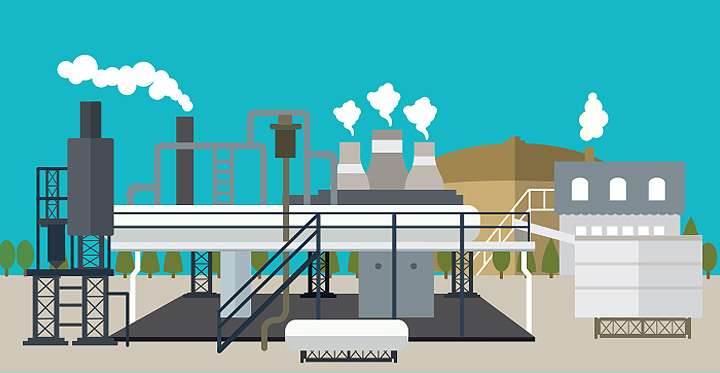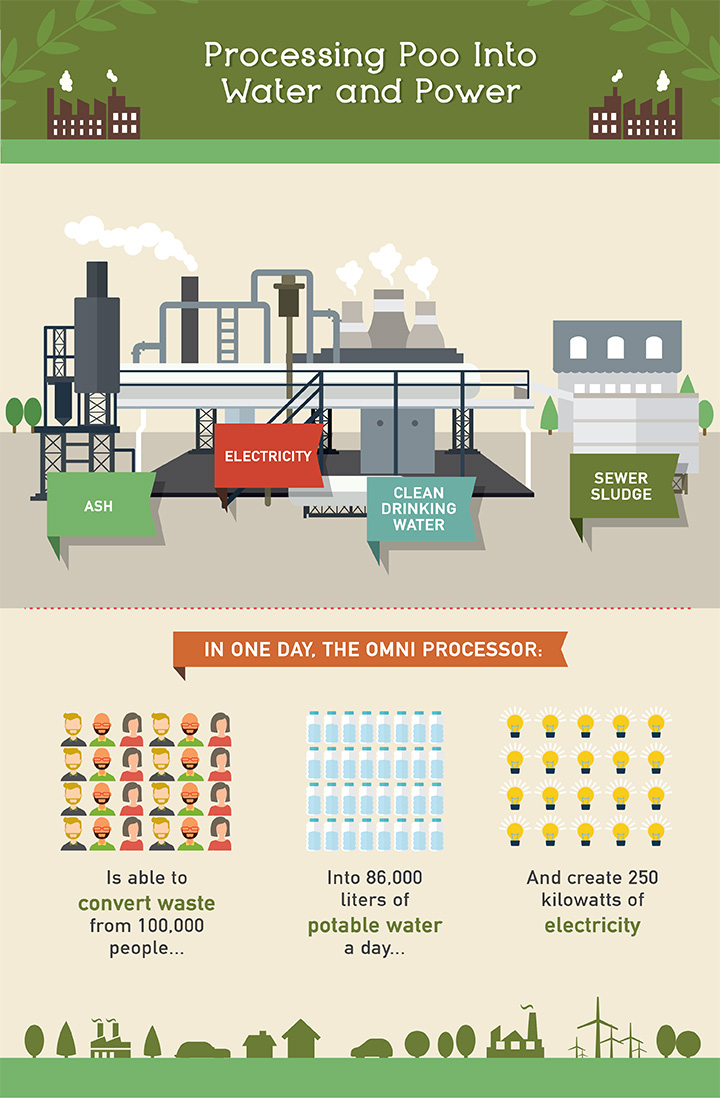“Waste” not, want not? At Bright ‘n Green our worm composting toilet breaks down excrement into fertilizer and our biofilter cleans and reuses waste water for on-site non-potable water needs. These are just a couple ways one can turn waste into wine. Well maybe not wine, but something useful. Here’s a blog from us and Custom Made to introduce you to the exciting world of waste recycling …
Repurposing Waste Worldwide
In an effort to protect our world for future generations, recycling has become more and more common on both a local and global level. In addition to paper and plastic, people are experimenting with new and diverse recycling processes. Less conventional recycling innovations have enabled all types of communities to reach their goals of becoming more sustainable.
We already know landfill waste—which was once thought to both take up space and emit harmful greenhouse gases—can be recycled in a variety of ways, from creating energy to building materials.
Brace yourselves for the next big thing in renewable energy: human waste.
Yes, in the name of extreme resourcefulness, recycling human waste is the ultimate, efficient way to use what naturally occurs. Though the topic may sound taboo, even Bill Gates is in on the big poo movement (and was recently seen drinking potable water converted out of human excrement). So how is human waste recycled and reused, and is it really worth the trouble?
Poo Energy: From Flush to Fuel
The practice of utilizing human excrement as an energy source dates back to the 16th century. Today, as countries and cities strive to meet new sustainable energy requirements, recycling human waste into energy is gaining popularity.
In most developed nations, organic waste is deposited in landfill sites, typically located just outside major cities. After it is treated, most landfill waste leaves behind a nasty sewage sludge that is difficult to dispose of. This byproduct emits dangerous greenhouse gases such as carbon dioxide and methane, which are harmful to the environment.
However, communities across the globe have adopted a process called Anaerobic Digestion (AD) to utilize this leftover waste. Anaerobic Digestion breaks down the sludge to produce valuable biogas and nutrient-rich digestate.
Biogas is a mixture of gasses that can be produced from any raw material such as agricultural waste, plant material, manure, and municipal sewage. Specifically, biogas contains a mixture of carbon dioxide (CO2) and methane that results in bio-methane, a high British thermal unit (BTU) methane that is completely renewable and provides a low-carbon alternative fuel. Biogas can be used as fuel directly or fed through a unit with combined heat and power to generate electricity.
Although biogas is what we look for in regards to producing energy, digestate produced by the AD process is quite valuable. Because it is packed with fully fermented nutrients, digestate is an excellent organic fertilizer and is incredibly environmentally friendly.
From Poop to Potable
Bill Gates recently shocked the world by drinking water derived from sewer sludge. Not only did the computer magnate and respected philanthropist drink water made from human excrement: He’s pushing it as the next sustainable wave of the future, and rightfully so.
For those of us who have had the luxury of running water our entire lives, this may seem like cringe-worthy tech. However, for the 750 million people in the world who lack access to clean water, going to the bathroom can prove problematic and result in dangerous, contaminated water. The lack of proper sanitation can be blamed for countless diseases, causes mental and physical issues, and kills more than 700,000 children every year.
Meet the Omni Processor
The Omni Processor is basically a revved up steam engine that safely burns waste at an extremely high temperature. The Omni Processor system burns at such a high temp that it meets all the U.S. emissions standards and doesn’t emit a foul odor.
Using a steam engine system, the Omni Processor can produce more than enough energy necessary to burn the next batch of waste, which makes the machine self powering. Even better, it produces extra energy.
While it’s easy to grimace over poo water and even poo power, excrement is a viable source of clean drinking water and energy. “The processor wouldn’t just keep human waste out of the drinking water; it would turn waste into a commodity with real value in the marketplace,” Gates says. “It’s the ultimate example of that old expression: One man’s trash is another man’s treasure.”
Poo-Fueled Energy
Although the Omni Processor is on a mission to turn human waste into a practical and sustainable resource for developing communities, there are quite a few countries that have been taking advantage of their community’s collective output for years.
Some countries, including Sweden and Germany, have been using anaerobic digestion for years. Local sewage plants sell their energy back to the national grid network in both countries. In fact, the process is so popular and profitable that some plants have started to produce purpose-grown crops in order to create more waste to feed the anaerobic digestion units. These crops usually include grasses and maize, which have a high methane yield. The practice of growing their own crops to burn enables sewage plants to control the full-cycle process of “growing” high methane, from crop to energy production.
Toilet Transport
One of the sectors to really embrace waste as a source of energy is public transportation. In cities such as Oslo, poo-powered buses have become an integral part of the city’s plan to be carbon neutral by 2050. It’s estimated that using human waste-based power the city can eliminate 44 tons of C02 per bus per year.
Although not new to the poo energy world, the U.K. has become a forerunner in what they refer to as “sewage waste.” In November 2014, Britain made international headlines when the country’s first Bio Bus (aka “Poo Bus”) went into service. The 40-seat bus runs solely on bio-methane gas generated by the treatment of sewage and food waste. A single passenger’s annual food and sewage waste is able to fuel the Bio-Bus for 37 miles.
So even if the thought of poo-generated energy is a bit repulsive, the benefits are undeniable. Bio-methane produces 95 percent less carbon dioxide and 80 percent less nitrous oxide than diesel and has no particulate emissions. And researchers report there’s enough bio-methane in the U.K. to fuel half of the country’s large trucks.
And right here in the good old U.S.A., car manufacturers are already eyeing poo power as a cheap alternative to rising gas prices. Toyota’s Mirai Hydrogen Fuel Cell car runs on—you guessed it—poo power. The car is one of five models released in the U.S. that run on fuel generated from raw sewage. Using a tri-generation system, sewage is anaerobically digested and produces 100 kilograms of hydrogen each day, enough to fill 25 to 50 fuel cell electric vehicles.
Poo-Powered Homes
For anyone who still doubts the feasibility of renewable energy on an individual level, good old number two already generates power for private homes.
In 2010, British Gas and Scotia Gas companies began to pipe bio-methane, derived from fecal matter, into the national network grid and directly into the homes of 130 customers in Oxfordshire. The whole process of converting human waste into bio-methane takes around 23 days from flush to finish. An estimated 350,000 homes could be supplied with gas generated from human waste if all of the sewage plants in the U.K. used the same conversion technology.
Urine-tricity
Just in case you thought we weren’t going to bring pee into the human waste discussion, well, “u-rine” for quite a surprise. Now that we’ve covered the energy benefits of recycling poo, let’s talk about urine.
We produce an estimated 64 trillion liters of urine every year. This abundance has led many to research and develop ways to convert the ubiquitous yellow resource into electricity. In fact, over the years, many “pee conversion” technologies have succeeded into generating not only electricity, but also clean water and hydrogen.
Pee-Powered Phones
Urine has already proven to be electrifiable. “Urine-tricity” is possible because of microbial fuel cells (MFCs), which contain live microbes. When urine flows through an MFC, the microbes consume it as part of their normal metabolic process. This, in turn, frees electrons that, once gathered by electrodes and connected to an external circuit, generate a current.
Using a microbial fuel stack, researchers have tapped into the metabolism of live micro-organisms to create electricity from converted organic matter—in this case urine. Using this method, researchers at the Bristol Robotics Laboratory were able to create enough electricity to charge a mobile phone.
Pee-Powered Autos
The automobile industry is already clamoring at this cheap and readily available fuel source. Gerardine Botte, a professor of chemical and bio-molecular engineering at Ohio University, has developed a technology to generate hydrogen fuel from urine.
Botte was able to mimic the electrolysis of water, which is the same process that can be used to produce hydrogen for fuel cells. However, Botte found that ammonia and urea hold hydrogen atoms looser than water, therefore requiring less energy to split the atoms and create energy.
Conclusion
Recycling human waste into useable energy may still sound incredibly icky to most. However, it’s a feasible, cheap, and environmentally responsible alternative. Whether or not we’re talking about regenerating poo into potable drinking water for millions of people or using urine to power a smartphone, it seems waste isn’t so wasteful after all.




